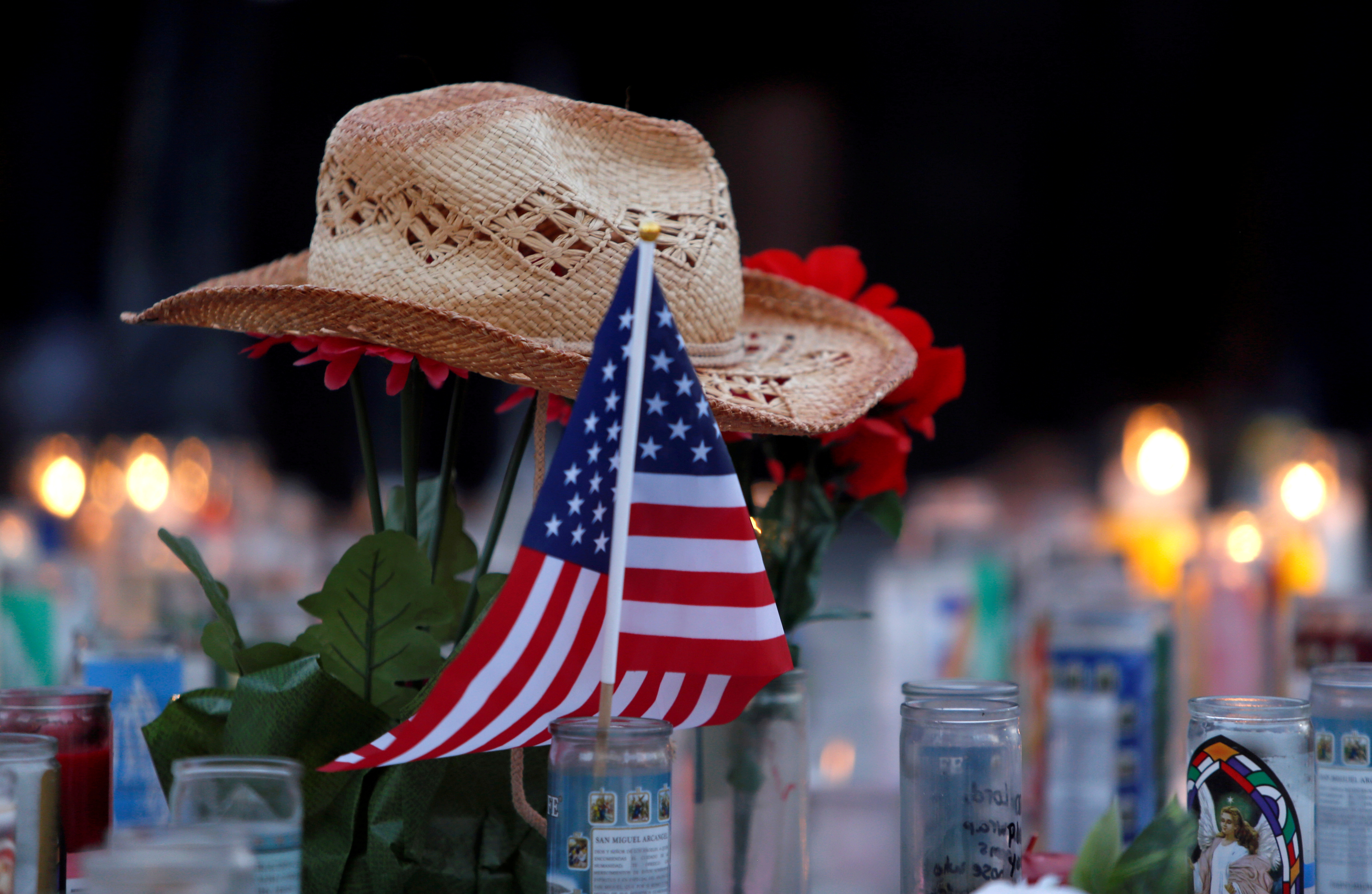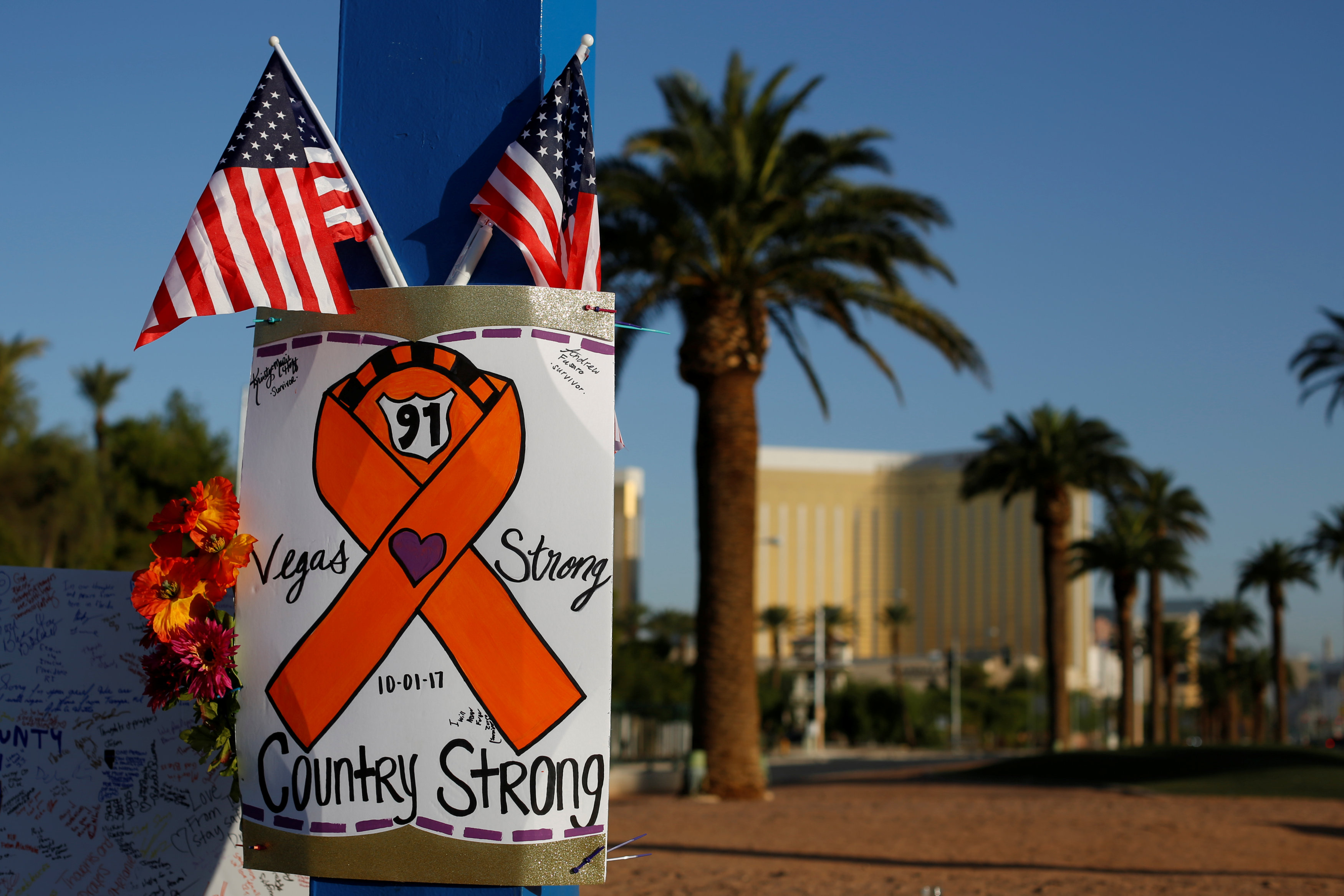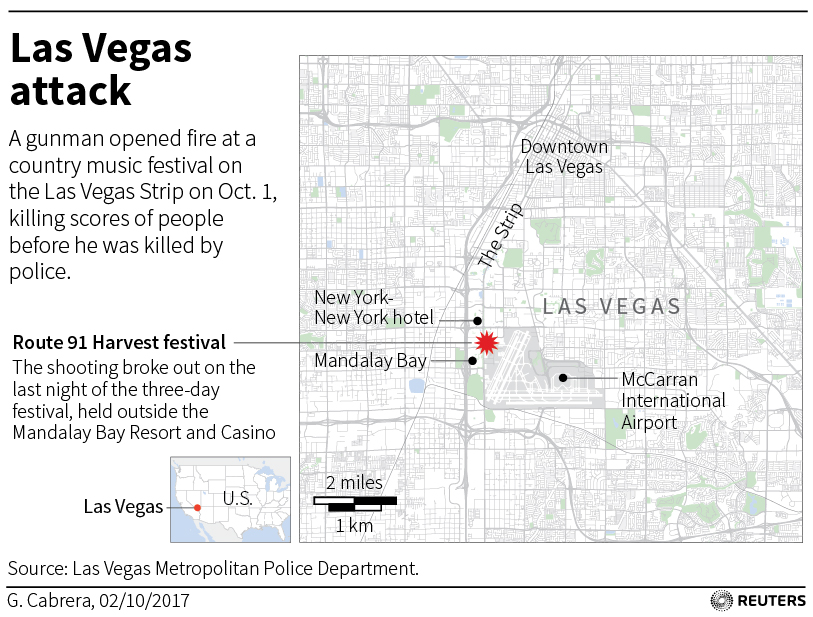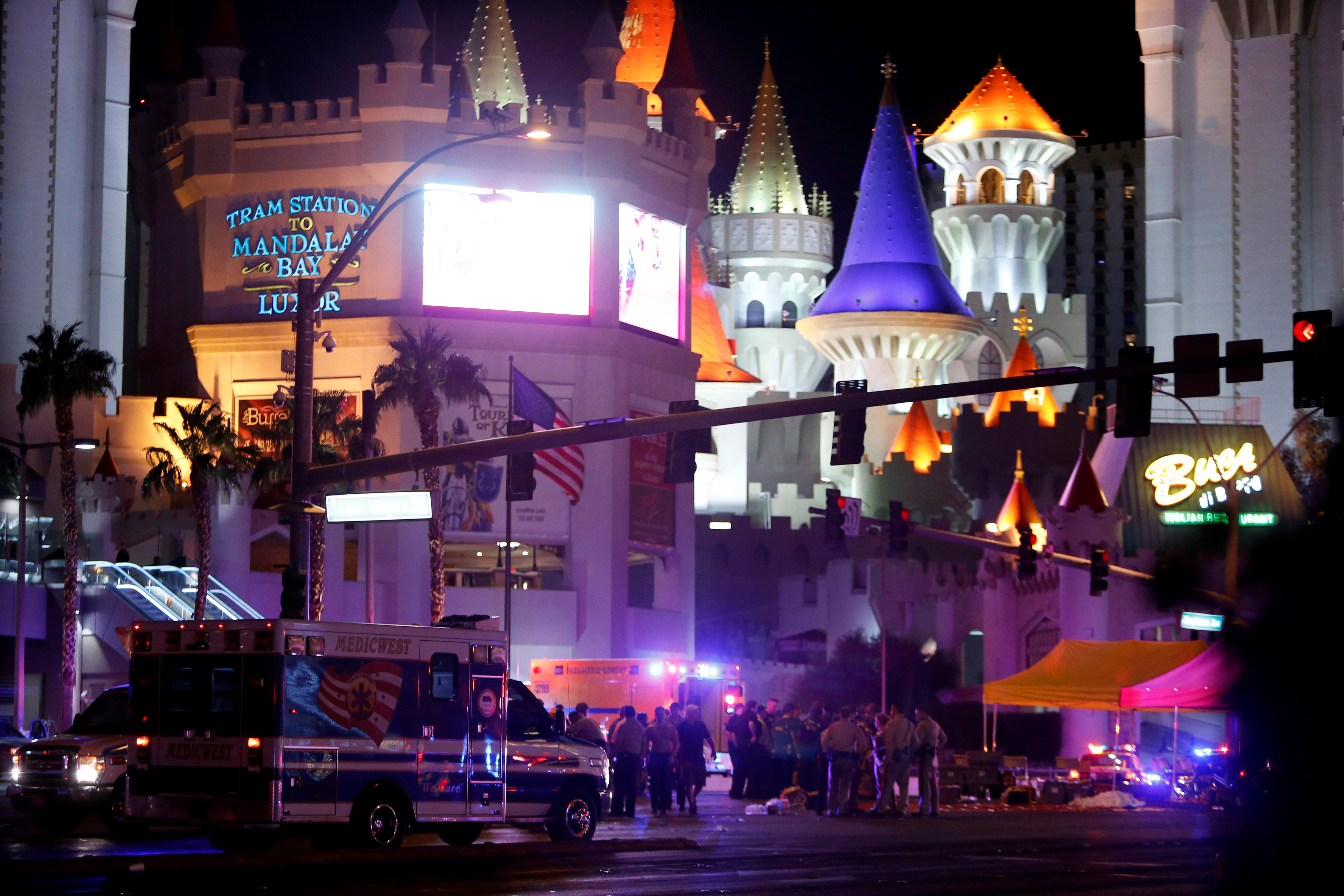
By Brian Grow and John Shiffman
LAS VEGAS (Reuters) – The company stacked brochures in funeral parlors around Sin City. On the cover: a couple clasping hands. Above the image, a promise: “Providing Options in Your Time of Need.”
The company, Southern Nevada Donor Services, offered grieving families a way to eliminate expensive funeral costs: free cremation in exchange for donating a loved one’s body to “advance medical studies.”
Outside Southern Nevada’s suburban warehouse, the circumstances were far from comforting. In the fall of 2015, neighboring tenants began complaining about a mysterious stench and bloody boxes in a Dumpster. That December, local health records show, someone contacted authorities to report odd activity in the courtyard.
Health inspectors found a man in medical scrubs holding a garden hose. He was thawing a frozen human torso in the midday sun.
As the man sprayed the remains, “bits of tissue and blood were washed into the gutters,” a state health report said. The stream weaved past storefronts and pooled across the street near a technical school.
Southern Nevada, the inspectors learned, was a so-called body broker, a company that acquires dead bodies, dissects them and sells the parts for profit to medical researchers, training organizations and other buyers. The torso on the gurney was being prepared for just such a sale.
Each year, thousands of Americans donate their bodies in the belief they are contributing to science. In fact, many are also unwittingly contributing to commerce, their bodies traded as raw material in a largely unregulated national market.
Body brokers are also known as non-transplant tissue banks. They are distinct from the organ and tissue transplant industry, which the U.S. government closely regulates. Selling hearts, kidneys and tendons for transplant is illegal. But no federal law governs the sale of cadavers or body parts for use in research or education. Few state laws provide any oversight whatsoever, and almost anyone, regardless of expertise, can dissect and sell human body parts.
“The current state of affairs is a free-for-all,” said Angela McArthur, who directs the body donation program at the University of Minnesota Medical School and formerly chaired her state’s anatomical donation commission. “We are seeing similar problems to what we saw with grave-robbers centuries ago,” she said, referring to the 19th-century practice of obtaining cadavers in ways that violated the dignity of the dead.
“I don’t know if I can state this strongly enough,” McArthur said. “What they are doing is profiting from the sale of humans.”
The industry’s business model hinges on access to a large supply of free bodies, which often come from the poor. In return for a body, brokers typically cremate a portion of the donor at no charge. By offering free cremation, some deathcare industry veterans say, brokers appeal to low-income families at their most vulnerable. Many have drained their savings paying for a loved one’s medical treatment and can’t afford a traditional funeral.
“People who have financial means get the chance to have the moral, ethical and spiritual debates about which method to choose,” said Dawn Vander Kolk, an Illinois hospice social worker. “But if they don’t have money, they may end up with the option of last resort: body donation.”
Few rules mean few consequences when bodies are mistreated. In the Southern Nevada case, officials found they could do little more than issue a minor pollution citation to one of the workers involved. Southern Nevada operator Joe Collazo, who wasn’t cited, said he regretted the incident. He said the industry would benefit from oversight that offers peace of mind to donors, brokers and researchers.
“To be honest with you, I think there should be regulation,” said Collazo. “There’s too much gray area.”
“BIG MARKET FOR DEAD BODIES”
Donated bodies play an essential role in medical education, training and research. Cadavers and body parts are used to train medical students, doctors, nurses and dentists. Surgeons say no mannequin or computer simulation can replicate the tactile response and emotional experience of practicing on human body parts. Paramedics, for example, use human heads and torsos to learn how to insert breathing tubes.
Researchers rely on donated human body parts to develop new surgical instruments, techniques and implants; and to develop new medicines and treatments for diseases.
“The need for human bodies is absolutely vital,” said Chicago doctor Armand Krikorian, past president of the American Federation for Medical Research. He cited a recent potential cure for Type 1 diabetes developed by studying pancreases from body donors. “It’s a kind of treatment that would have never come to light if we did not have whole-body donation.”
Despite the industry’s critically important role in medicine, no national registry of body brokers exists. Many can operate in near anonymity, quietly making deals to obtain cadavers and sell the parts.
“There is a big market for dead bodies,” said Ray Madoff, a Boston College Law School professor who studies how U.S. laws treat the dead. “We know very little about who is acquiring these bodies and what they are doing with them.”
In most states, anyone can legally purchase body parts. As an upcoming story will detail, a Tennessee broker sold Reuters a cervical spine and two human heads after just a few email exchanges.
Through interviews and public records, Reuters identified Southern Nevada and 33 other body brokers active across America during the past five years. Twenty-five of the 34 body brokers were for-profit corporations; the rest were nonprofits. In three years alone, one for-profit broker earned at least $12.5 million stemming from the body part business, an upcoming Reuters report will show.
Because only four states closely track donations and sales, the breadth of the market for body parts remains unknown. But data obtained under public record laws from those states – New York, Virginia, Oklahoma and Florida – provide a snapshot. Reuters calculated that from 2011 through 2015, private brokers received at least 50,000 bodies and distributed more than 182,000 body parts.
Permits from Florida and Virginia offer a glimpse of how some of those parts were used: A 2013 shipment to a Florida orthopedic training seminar included 27 shoulders. A 2015 shipment to a session on carpal tunnel syndrome in Virginia included five arms.
As with other commodities, prices for bodies and body parts fluctuate with market conditions. Generally, a broker can sell a donated human body for about $3,000 to $5,000, though prices sometime top $10,000. But a broker will typically divide a cadaver into six parts to meet customer needs. Internal documents from seven brokers show a range of prices for body parts: $3,575 for a torso with legs; $500 for a head; $350 for a foot; $300 for a spine.
Body brokers also have become intertwined with the American funeral industry. Reuters identified 62 funeral operators that have struck mutually beneficial business arrangements with brokers. The funeral homes provide brokers access to potential donors. In return, the brokers pay morticians referral fees, ranging from $300 to $1,430, according to broker ledgers and court records.
These payments generate income for morticians from families who might not be able to otherwise afford even simple cremation. But such relationships raise potential conflicts of interest by creating an incentive for funeral homes to encourage grieving relatives to consider body donation, sometimes without fully understanding what might happen to the remains.
“Some funeral home directors are saying, ‘Cremation isn’t paying the bills anymore, so let me see if I can help people harvest body parts,’” said Steve Palmer, an Arizona mortician who serves on the National Funeral Directors Association’s policy board. “I just think families who donate loved ones would have second thoughts if they knew that.”
Some morticians have made body donation part of their own businesses. In Oklahoma, two funeral home owners invested $650,000 in a startup body broker firm. In Colorado, a family operating a funeral home ran a company that dissected and distributed body parts from the same building.
When a body is donated, few states provide rules governing dismemberment or use, or offer any rights to a donor’s next of kin. Bodies and parts can be bought, sold and leased, again and again. As a result, it can be difficult to track what becomes of the bodies of donors, let alone ensure that they are handled with dignity.
In 2004, a federal health panel unsuccessfully called on the U.S. government to regulate the industry. Since then, more than 2,357 body parts obtained by brokers from at least 1,638 people have been misused, abused or desecrated across America, Reuters found.
The count, based on a review of court, police, bankruptcy and internal broker records, is almost certainly understated, given the lack of oversight. It includes instances in which bodies were used without donor or next-of-kin consent; donors were misled about how bodies would be used; bodies were dismembered by chainsaws instead of medical instruments; body parts were stored in such unsanitary conditions that they decomposed; or bodies were discarded in medical waste incinerators instead of being properly cremated.
Most brokers employ a distinctive language to describe what they do and how they make money. They call human remains “tissue,” not body parts, for example. And they detest the term “body brokers.” They prefer to be known as “non-transplant tissue banks.”
Most also insist they don’t “sell” body parts but instead only charge “fees” for services. Such characterizations, however, are contradicted by other documents Reuters reviewed, including court filings in which brokers clearly attach monetary value to donated remains.
A lien filed by one body broker against another cited as collateral “all tissue inventory owned by or in the possession of debtor.” In bankruptcy filings, brokers have claimed body parts as assets. One debtor included as property not only cabinets, desks and computers, but also spines, heads and other body parts. The bankrupt broker valued the human remains at $160,900.
“There are no real rules,” said Thomas Champney, a University of Miami anatomy professor who teaches bioethics. “This is the ultimate gift people have given, and we really need to respect that.”
Last December, Reuters reported that more than 20 bodies donated to an Arizona broker were used in U.S. Army blast experiments – without the consent of the deceased or next of kin. Some donors or their families had explicitly noted an objection to military experiments on consent forms. Family members learned of the 2012 and 2013 experiments not from the Army but from a Reuters reporter who obtained records about what happened.
In another case, Detroit body broker Arthur Rathburn is scheduled to stand trial in January for fraud, accused of supplying unsuspecting doctors with body parts infected with hepatitis and HIV for use in training seminars. U.S. officials cited the case as an example of their commitment to protect the public. But Reuters found that, despite warning signs, state and federal officials failed to rein in Rathburn for more than a decade, allowing him to continue to acquire hundreds of body parts and rent them out for profit. He has pleaded not guilty.
Given the number of body brokers that currently operate in America, academics and others familiar with the industry say regular inspections of facilities and reviews of donor consent forms wouldn’t place a big burden on government.
“This isn’t reinventing the wheel,” said Christina Strong, a New Jersey lawyer who co-wrote a set of standards that most states largely adopted for the organ transplant industry. “It would not be a stretch to envision a uniform state law which requires that those who recover, distribute and use human bodies adhere to uniform standards of transparency, traceability and authorization.”
But without consistent laws or a clear oversight authority – local, state or national – “nobody is accounting for anything,” said Todd Olson, an anatomy and structural biology professor at Yeshiva University’s Albert Einstein College of Medicine. “Nobody is watching. We regulate heads of lettuce in this country more than we regulate heads of bodies.”
“RAW MATERIALS FOR FREE”
Body brokers range in size from small, family-operated endeavors to national firms with offices in several states. Brokers also vary in expertise.
Garland Shreves, who founded Phoenix broker Research for Life in 2009, said he invested more than $2 million in quality-control procedures and medical equipment, including $265,000 on an X-ray machine to scan cadavers for surgical implants.
But other brokers have launched their businesses for less than $100,000, internal corporate records and interviews show. Often, the largest capital expenses are a cargo van and a set of freezers. Some brokers have saved money by using chainsaws to carve up the dead instead of more expensive surgical saws.
“You have people who want to do it in a pretty half-assed way,” Shreves said. “I have really grown to dislike the business.”
Brokers can also reduce expenses by forgoing the meticulous quality control procedures and sophisticated training called for by a national accreditation organization, the American Association of Tissue Banks.
In Honolulu, police were called twice to storage facilities leased by body broker Bryan Avery in 2011 and 2012. Each time, they found decomposing human remains. Both times, police concluded that Avery committed no crimes because no state law applied.
Steven Labrash, who directs University of Hawaii’s body donation program, said the Avery case illustrates the need for laws to protect donors.
“Everybody knows that what he did was unethical and wrong,” Labrash said of Avery. “But did he break any laws? Not the way they are written today.”
Avery defended how he ran his business and said the incidents were the result of misunderstandings. He said he is now raising capital for a new company, Hawaii BioSkills, which he said will use body parts to train surgeons.
“I’m all for oversight, and companies that are doing this need to be transparent,” Avery said. “As long as it doesn’t infringe upon the flow of business, that’s fine.”
Walt Mitchell, a Phoenix businessman involved in the startup of three brokers, said one reason the industry attracts entrepreneurs is that businesses can profit handsomely from selling a donated product.
“If you can’t make a business when you’re getting raw materials for free,” Mitchell said, “you’re dumb as a box of rocks.”
Even so, a third of the 34 brokers Reuters identified went bankrupt or failed to pay their taxes, according to court filings. When failing businesses in the industry cut corners to save money, the consequences for the families of donors can be emotionally wrenching.
“THE LAST SELFLESS THING”
Harold Dillard worked with his brother resurfacing bathtubs and kitchen countertops in Albuquerque, New Mexico. He was diagnosed with terminal cancer the day after Thanksgiving in 2009.
“He was 56 years young, active, healthy, had a great life, and one night – bam!” said his daughter, Farrah Fasold. “He wanted to do the last selfless thing he could do before he died, and so he donated his body.”
As her father lay dying, Fasold said, employees from Albuquerque broker Bio Care visited father and daughter, and made a heartfelt pitch: The generous gift of his body to science would benefit medical students, doctors and researchers. Fasold said Bio Care cited several sample possibilities, including that her father’s body might be used to train surgeons on knee replacement techniques.
Fasold’s view of Bio Care soon changed. It took weeks longer than promised to receive what she was told were her father’s cremated remains. Once she received them, she suspected they were not his ashes because they looked like sand. She was correct.
In April 2010, Fasold was told by authorities that her father’s head was among body parts discovered at a medical incinerator. She also learned – for the first time, she said – that Bio Care was in the business of selling body parts.
“I was completely hysterical,” she said. “We would have never have signed up if they had ever said anything about selling body parts – no way. That’s not what my dad wanted at all.”
Inside Bio Care’s warehouse, authorities said they found at least 127 body parts belonging to 45 people.
“All of the bodies appeared to have been dismembered by a coarse cutting instrument, such as a chainsaw,” a police detective wrote in an affidavit.
Bio Care owner Paul Montano was charged with fraud. According to the police affidavit, Montano denied abusing bodies and told detectives that he ran Bio Care with “five volunteer employees,” including his father. He did not respond to requests for comment.
Prosecutors later withdrew the charge against Montano because they said they could not prove deception or any other crime. No other state law regulated the handling of donated bodies or protected the next of kin.
Confused and outraged, Fasold spoke by phone with Kari Brandenburg, then the district attorney in Bernalillo County. Fasold recorded a portion of the call.
“What happened was horrible, but New Mexico law is silent on this kind of activity,” Brandenburg told Fasold. The prosecutor said that, although Montano was perhaps “the worst businessman in the world,” his failures were due in part to deals that fell through.
“So,” Fasold replied, “because other people reneged on their agreements, it’s OK for him to go ahead and chop up my dad’s body and have it incinerated?”
“No, it’s not OK,” the prosecutor replied. “But it doesn’t make it a crime. There’s no criminal law that says this is wrong.”
In a recent interview, Brandenburg said that she, too, was frustrated to find that no law protects people like Fasold and her father. “It was outrageous,” the former prosecutor said. “These families were devastated and injured in a deep way.”
Authorities ultimately recovered the other body parts of Fasold’s father and returned them to her for proper cremation. Some had been found in tubs at the incinerator and some at the Bio Care facility.
Fasold said in an interview she is surprised that the law hasn’t been changed to protect relatives.
“They could have done something long ago, passed new laws,” she said of the body broker industry. “It’s just so shady and devious.”
LUCRATIVE PARTNERSHIP
Partnerships between body brokers and funeral homes can sometimes yield sizeable businesses.
In 2009, Oklahoma funeral home owners Darin Corbett and Hal Ezzell invested $650,000 for a 50 percent stake in a company created by former executives of a large Phoenix-based body broker, court records show. According to an investor prospectus reviewed by Reuters, the new firm’s five-year revenue forecast was $13.8 million based on 2,100 donated bodies.
“Darin and I felt like we had, through our funeral home ties, the ability, if we wanted, to encourage donors,” Ezzell said in an interview.
The Norman, Oklahoma firm, United Tissue Network, converted to nonprofit status in 2012 to comply with a change in state law. But a for-profit company co-owned by Ezzell, Corbett and United Tissue President David Breedlove is paid to provide management services, leased equipment and loans. In 2015, for example, their nonprofit paid their for-profit $412,000 for services, tax records show.
Ezzell and Corbett said they are passive investors. But, Corbett added, “we suggest families consider (United Tissue) first because they are local and time delay is critical,” obliquely referring to the fact that bodies decompose quickly.
The nonprofit United Tissue also has supplied donated human remains to Breedlove’s for-profit company, Anatomical Innovations. That company sold authentic human skulls, elbows, livers and eyeballs, among other body parts. Online, it advertised free shipping on purchases over $125. After inquiries from Reuters, Breedlove closed Anatomical Innovations.
Breedlove said consent forms signed by United Tissue donors permitted the dissection and transfer of body parts to for-profit entities, including the one he owned. The forms allow United Tissue, at its “sole discretion,” to use a body as deemed necessary “to facilitate the gift.”
“Our consents are pretty clear about what the anatomical uses may be,” he said.
According to Oklahoma state filings obtained under public records laws, United Tissue has grown steadily. From 2012 through 2016, United Tissue received 3,542 bodies. Almost half were referred by funeral homes. Ezzell said that last year, no more than 10 percent came from mortuaries owned by Corbett or him.
During that five-year period, the records show, United Tissue distributed 17,956 body parts to clients. Supply has sometimes exceeded demand. In late 2015, the broker sent an email in which it offered customers a price break to help move surplus arms, pelvises and shoulders.
“I wanted to let you know of a few specimens we have an overstock that we are trying to place before the end of the year,” United Tissue Executive Director Alyssa Harrison wrote to a bone research organization. “We are offering these as a discounted fee for December.”
Harrison said in an interview that while she always respects the dead, she has a duty to sustain the operation.
“It is a product, a very precious product,” she said. “I still have to make enough money to pay my employees and keep our doors open. Yes, it is human tissue, but there is still a market value.”
THE FROZEN TORSO
The 2015 incident outside Las Vegas involving the frozen torso was also the product of a partnership between a body broker and a funeral home.
Both the broker, Southern Nevada Donor Services, and the funeral home, Valley Cremation and Burial, were struggling financially. Valley agreed to allow Southern Nevada to dissect and prepare cadavers and body parts at its funeral home. The remains and related paperwork would be kept at Valley’s warehouse in the suburban industrial park, a few miles away.
Southern Nevada’s owner, Joe Collazo, had a decade’s experience selling body parts. Court records show he also served nearly two years in prison in the late 1990s for forgery. And a former employer once accused him in a lawsuit of stealing donated body parts valued at $75,000 and selling them to a customer in Turkey.
Collazo said his forgery conviction is irrelevant and the theft allegation untrue. His business followed industry best practices, he said, and served an important public service to the medical community.
Local and state officials reported that they found other troubling signs, beyond the torso, at the storage facility. These included a bloody, motorized saw typically used by construction workers, and moldy body parts inside an unplugged freezer.
Valley is no longer in business, and the owner died, according to state records. Southern Nevada also dissolved – in a trail of debt and desecrated body parts.
Seven months after health officials inspected the place, the courtyard remained littered with empty coolers bearing Southern Nevada’s initials. Nearby stood a rusted kiln, a pair of filthy mops and a gunmetal gray coffin, broiling in the desert sun.
The only person charged in the incident was Gary Derischebourg, a funeral home employee who said his duties included helping prepare body parts for Collazo. Derischebourg said he was too busy to defrost the torso, so he asked an unemployed friend to do it. Derischebourg pleaded guilty to a misdemeanor pollution citation for the stream of water that contained human tissue.
Someone, he said, needed to take responsibility. “I’m a stand-up guy,” he said.
As for the defrosted torso? Collazo said he rented it to a group of surgeons, then had it cremated.
Today, Collazo is a manager at a car dealership. Derischebourg drives for Uber.
(Reported by Brian Grow and John Shiffman; Additional reporting by Adam DeRose, Elizabeth Culliford, Mir Ubaid and Sophia Kunthara; Edited by Blake Morrison.)














